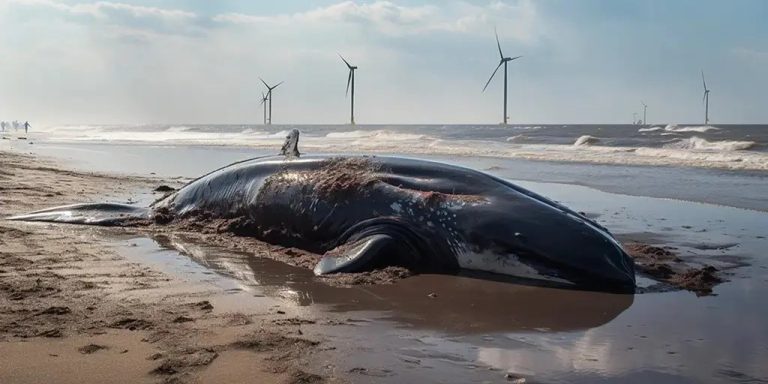In a surprising but long overdue move, the Bureau of Ocean Energy Management (BOEM) has released its final Planned Environmental Impact Statement (PEIS) for New York Bay. Although the document contains a lot of technical jargon and cautious language, it marks a critical shift. In a rare move, BOEM acknowledged that offshore wind farms can indeed cause biological, socioeconomic, physical and cultural harm.

PEIS covers six commercial wind leases along the New Jersey and New York coasts, totaling more than 488,000 acres. While its main focus is on outlining measures to “avoid, minimize, mitigate and monitor” impacts, the fact that BOEM is even considering these measures means that recognition that offshore wind can harm marine ecosystems and coastal communities is long overdue. The wording in the document suggests that these developments, while repeatedly described as environmentally friendly solutions to the climate crisis, are not entirely benign.
Impact appears
While BOEM insists the PEIS is “procedural” and not the final word on the matter, the document does provide insight into some of the broader consequences of wind energy development. PEIS details each category of potential adverse effects:
Biological impacts: Marine mammals, sea turtles, birds and fish may be affected by noise, habitat displacement and changes in migration patterns. Even bats not normally associated with offshore environments may be affected.
Physical and socioeconomic impacts: Potential impacts on water and air quality, commercial and recreational fishing, tourism, and scenic resources are outlined. These chapters make it clear that local economies and communities that rely on the ocean can suffer significant damage.
Mitigation measures are not enough: While the report outlines a number of avoidance, minimization, mitigation and monitoring (AMMM) measures, it also acknowledges that some impacts are “unavoidable.”
A major shift in tone
PEIS further recognizes “the irreversible and irrevocable commitment of resources”. This bureaucratic phrase implies permanent changes to ecosystems and loss of natural resources due to wind farm construction. It's a stunning concession from an agency usually focused on promoting development.
For years, opponents of offshore wind have argued that the push for rapid development of renewable energy ignores the impact on marine life and coastal communities. BOEM's new PEIS seems to suggest those concerns may have been correct all along.
why this is important
The document comes amid growing criticism of the way offshore wind schemes are assessed and approved. Many believe rapid development is more important than thorough environmental review. With this PEIS, BOEM may be taking a more cautious approach, possibly influenced by growing legal challenges, public backlash, or even emerging scientific research showing that wind turbines are not as harmless as once thought.
In addition, the timing of this document's release is also important. The Biden administration aims to install 30 gigawatts of offshore wind power by 2030 as part of a broader strategy to combat climate change. However, this goal appears increasingly at odds with the reality outlined in PEIS – which suggests a more delicate balance must be struck between renewable energy expansion and ocean protection.
BOEM's PEIS could be seen as a long-awaited acknowledgment that the offshore wind boom could cause damage. While the document does not halt development, it sets the stage for greater scrutiny of future projects. Environmentalists, coastal communities and fishermen who have long voiced concerns can now look to PEIS as evidence that their voices are finally being heard.
BOEM's acknowledgment of the potential drawbacks of offshore wind is not just a bureaucratic shift, but an opportunity to rethink how we approach renewable energy development. Balancing climate goals with protecting the marine environment is crucial, and this PEIS could be a first step in that direction.
Relevant
